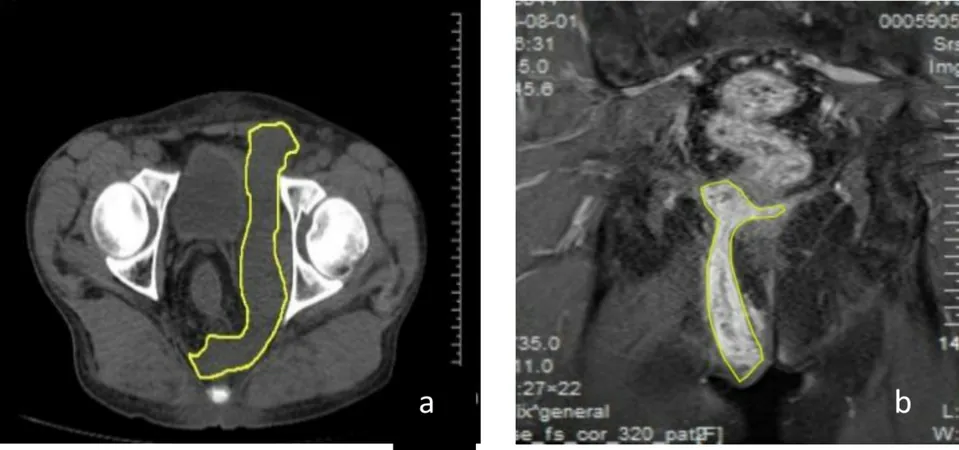
New Hope for Ovarian Cancer: PPP2R1A Mutation Could Enhance ATR Inhibitor Efficacy!
2025-03-27
Author: Mei
New Hope for Ovarian Cancer: PPP2R1A Mutation Could Enhance ATR Inhibitor Efficacy!
In a groundbreaking study from The Institute of Cancer Research, London, scientists have discovered a significant link between a specific gene mutation and ovarian clear cell carcinoma (OCCC) treatment response to ATR inhibitors—a new class of targeted cancer drugs. This revelation could transform the way clinicians approach treatment for a notoriously difficult-to-treat form of ovarian cancer.
For those unfamiliar, OCCC represents a particularly aggressive variant of ovarian cancer, accounting for approximately 5-15% of ovarian cancer cases. Common chemotherapy treatments have proven largely ineffective against OCCC, highlighting the urgent need for innovative therapeutic options. According to the study findings published in the journal *Oncogene*, identifying genetic markers such as the PPP2R1A mutation could lead to more personalized and effective treatment plans.
Understanding ATR Inhibitors
ATR inhibitors are currently under investigation in various clinical trials for their potential to combat several cancer types by disrupting cancer cells’ ability to repair DNA damage. This mechanism is especially powerful in tumors characterized by high levels of DNA damage, which can inhibit their growth and proliferation. However, the challenge has been pinpointing which specific mutations make tumors susceptible to ATR inhibitors.
Through a cutting-edge approach called CRISPR screening, researchers investigated over 18,000 genes and ultimately identified that loss-of-function mutations in the PPP2R1A gene significantly increase the sensitivity of OCCC cells to these inhibitors. This means that women with OCCC harboring this mutation could have a higher likelihood of positive outcomes when treated with ATR inhibitors.
A Step Towards Personalized Medicine
Professor Chris Lord, a leading scientist at the ICR, emphasized the importance of this discovery: “The poorer prognosis associated with advanced OCCC necessitates targeted treatment strategies. By identifying PPP2R1A mutations, we can better select patients who may benefit from ATR inhibitors.”
Detecting PPP2R1A mutations could soon become a routine diagnostic that informs treatment decisions. The hope is that as more research unfolds, additional methods for classifying patients based on their unique cancer profiles will emerge, leading to more effective treatment options and potentially improved survival rates for OCCC patients.
What Lies Ahead?
The next steps involve validating PPP2R1A mutations as reliable biomarkers of ATR inhibitor sensitivity in ongoing and future clinical trials. This could mark a monumental shift in the landscape of ovarian cancer treatment, offering new hope for patients crumpled under the weight of this aggressive disease. With continually advancing research, there is optimism that the medical community is on the verge of unlocking new therapeutic strategies that will significantly enhance patient outcomes.
Stay tuned as this exciting field of research evolves—it could mean the difference between life and death for many battling ovarian cancer!




 Brasil (PT)
Brasil (PT)
 Canada (EN)
Canada (EN)
 Chile (ES)
Chile (ES)
 Česko (CS)
Česko (CS)
 대한민국 (KO)
대한민국 (KO)
 España (ES)
España (ES)
 France (FR)
France (FR)
 Hong Kong (EN)
Hong Kong (EN)
 Italia (IT)
Italia (IT)
 日本 (JA)
日本 (JA)
 Magyarország (HU)
Magyarország (HU)
 Norge (NO)
Norge (NO)
 Polska (PL)
Polska (PL)
 Schweiz (DE)
Schweiz (DE)
 Singapore (EN)
Singapore (EN)
 Sverige (SV)
Sverige (SV)
 Suomi (FI)
Suomi (FI)
 Türkiye (TR)
Türkiye (TR)
 الإمارات العربية المتحدة (AR)
الإمارات العربية المتحدة (AR)